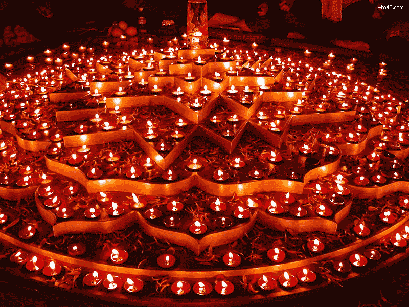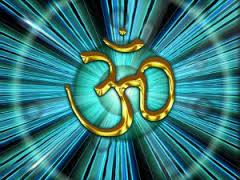 The Panchamahabhutas refer to the five elements of nature. And, according to Ayurveda, every human body is in effect made of five elements which are Earth (bhumi), Water (jala), Fire (agni), Air (vayu) and Space (aakash). The Hindu philosophy believes that, after death all of these 5 elements of human body are dissolved into respective element of nature, so that it can balance the equilibrium of natural cycle. We use our senses of hearing, taste, touch, sight and smell to identify the surrounding elements and their qualities which are connected with the Panchmahabhutas. The pancha mahabhutas theory may sound simplistic, but it is actually a very sophisticated method of classifying not only all of the objects found on Earth but also the natural cycles experienced on it like days, seasons, occurrence, and happenings. This is because the elements dominate at particular times, depending on the conditions experienced and observed.
The Panchamahabhutas refer to the five elements of nature. And, according to Ayurveda, every human body is in effect made of five elements which are Earth (bhumi), Water (jala), Fire (agni), Air (vayu) and Space (aakash). The Hindu philosophy believes that, after death all of these 5 elements of human body are dissolved into respective element of nature, so that it can balance the equilibrium of natural cycle. We use our senses of hearing, taste, touch, sight and smell to identify the surrounding elements and their qualities which are connected with the Panchmahabhutas. The pancha mahabhutas theory may sound simplistic, but it is actually a very sophisticated method of classifying not only all of the objects found on Earth but also the natural cycles experienced on it like days, seasons, occurrence, and happenings. This is because the elements dominate at particular times, depending on the conditions experienced and observed.
The 5 elements (Mahabhutas) have certain qualities, attributes and impacts on the body and mind. All objects and substances are a mixture of the five elements, but they have one dominant element that allows them to be identified and classified. Examples of food and herbs are used to illustrate the elemental groups; eg. Pepper, chilies, spices are related to fire element. Likewise cucumber, melon and curds is related to water element.
In every individual’s horoscope (kundali) the Panchmabhuta placement is represented by each element’s association with a planet. The placement of those planets in the horoscope suggests the health condition, temperament, ethical frame, intelligence, life span etc of an individual.
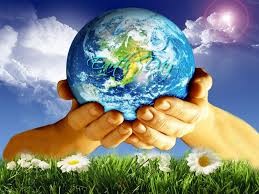 The Prithvi (earth) element represents the solid state of matter in the body. It symbolizes stability, durability and firmness. The bones, teeth, cells and tissues in human body are stable in nature thus they mark the earth element. Earth is regarded as a stable substance. It denotes hard formation that shapes body. The earth element is responsible for giving shape and strength to the body.
The Prithvi (earth) element represents the solid state of matter in the body. It symbolizes stability, durability and firmness. The bones, teeth, cells and tissues in human body are stable in nature thus they mark the earth element. Earth is regarded as a stable substance. It denotes hard formation that shapes body. The earth element is responsible for giving shape and strength to the body.
The sensory organ associated with earth element is smell (gandha). The nose in human body is hard compared to the other sensory organs. Characteristics of earth element are heavy, dull and solid in nature. In astrology the planet associated with the Earth element is Mercury.
 The Akash (ether) element represents the space, everything happens here. All matter exists in space. Ether is the distance that separates matter. Space is everywhere and touches everything. It is the receptivity and non-resistance to what is true. Talking about the human body, space is the considered as the vessel that receives all impressions. In the heart, it is believed that space accepts love and in our brain space accepts knowledge.
The Akash (ether) element represents the space, everything happens here. All matter exists in space. Ether is the distance that separates matter. Space is everywhere and touches everything. It is the receptivity and non-resistance to what is true. Talking about the human body, space is the considered as the vessel that receives all impressions. In the heart, it is believed that space accepts love and in our brain space accepts knowledge.
Space denotes vastness and openness. It therefore refers to the mind. The mind can conceive ideas, imagination and thoughts. The ideas can be as big as sky or as small as an ant. The mind needs to be open to originality and newness. The job of Ether is hearing sound. Therefore, ear is connected with this element. Our ear is hollow and transmits the sound waves. In compacted molecules we get dull sound and in more spacious room we get a booming sound. The qualities of ether element are clear, light, subtle and infinite. In astrology the planet connected with space (ether) is Jupiter.
 The Vayu (air) element is associated with movement. Air is movable, mobile and lively. Within the human body air is present in the form of oxygen, which is the basis for all energy transferred reactions. Air exists without any form and is the essential for fire to burn. It is also the basic element of Ayurveda.
The Vayu (air) element is associated with movement. Air is movable, mobile and lively. Within the human body air is present in the form of oxygen, which is the basis for all energy transferred reactions. Air exists without any form and is the essential for fire to burn. It is also the basic element of Ayurveda.
The sensory organ related to Vayu is the skin. It is the most sensitive organ of body. Skin is related with touch. It detects any movement easily. The air element in body is mobile, dry, light, cold and subtle in nature. This element in body is connected with any kind of movement. In human body air is required to produce energy. It keeps the body in constant motion. In astrology the plant connected with air element is Saturn.
 The Agni (fire) element converts solids into liquids and liquid to gas and back again to the original state. The body requires a certain amount of power to transform energy from solid and liquid intake. Fire provides that energy to the body. Fire has the power to change the state of any substance. In human body, fire is present in the form of energy that binds atoms together, converts food to fat and strengthening muscle. In addition, fire creates impulses and tense reactions in our mind and disturbs even our thought process.
The Agni (fire) element converts solids into liquids and liquid to gas and back again to the original state. The body requires a certain amount of power to transform energy from solid and liquid intake. Fire provides that energy to the body. Fire has the power to change the state of any substance. In human body, fire is present in the form of energy that binds atoms together, converts food to fat and strengthening muscle. In addition, fire creates impulses and tense reactions in our mind and disturbs even our thought process.
The fire element in body is responsible for the digestion of food. The sensory organ eyes (vision) are connected with the fire. Fire element is hot, sharp, light, dry and delicate. Penetration, digestion of food, renovation, thought process, intelligence and most importantly perception of human mind are connected with the fire element. The body temperature is also connected with the fire element. In astrology Mars is connected with the fire element of body.
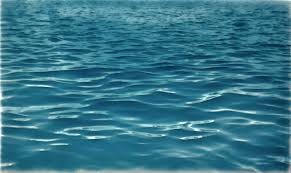 The Jal (water) element in Ayurveda is connected with lubrication in body. The liquid component in body is represented by water. Water is the prerequisite for the survival of living creatures, including humankind. About 70% of human body is made up of water and it is very important for body’s smooth functioning. In addition to water other fluids and blood are in liquid form. Blood which carries on function of supplying oxygen and nutrients to tissues, removes waste, transports hormones and other signals inside body to different organs. Blood also regulates body temperature. Water is a not stable it keeps moving from part to part. It binds different structures i.e the cells in our body.
The Jal (water) element in Ayurveda is connected with lubrication in body. The liquid component in body is represented by water. Water is the prerequisite for the survival of living creatures, including humankind. About 70% of human body is made up of water and it is very important for body’s smooth functioning. In addition to water other fluids and blood are in liquid form. Blood which carries on function of supplying oxygen and nutrients to tissues, removes waste, transports hormones and other signals inside body to different organs. Blood also regulates body temperature. Water is a not stable it keeps moving from part to part. It binds different structures i.e the cells in our body.
Taste (rasa) is associated with water element. The qualities of water are cool, liquid, and dull, soft and thin. Its main jobs are cohesiveness and stickiness. This element has no odor (smell) but can be heard, felt, seen and tasted. In astrology Venus is connected with water element.
A year is divided into four seasons; namely winter when it is cold and rainy (water drains into earth), spring when new growth occurs and it becomes warmer in summer. The air is as hot as fire in the summer. This is how the Panchmahabhutas dominate the nature.
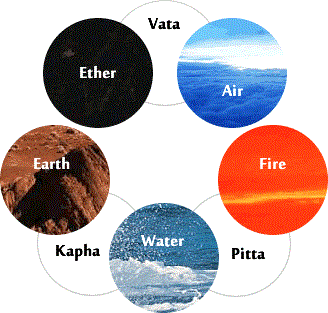 In Ayurveda Vayu (Air) and Akash (Ether) form vata. And, vata governs body movement. The elements Agni (fire) and Jal (water) are reflected in pitta and pitta governs transformation. Kapha is combination of Ether and Water; it manifests itself as a matter. These three bio-energies regulate all physical, spiritual and mental doshas (malfunctions). Their proportions in an individual’s body form his/her personality which does not change throughout the life. According to the dominance of the Dosha, a person is considered Vata, Pitta or Kapha type. Each of these types has its own strengths and weaknesses.
In Ayurveda Vayu (Air) and Akash (Ether) form vata. And, vata governs body movement. The elements Agni (fire) and Jal (water) are reflected in pitta and pitta governs transformation. Kapha is combination of Ether and Water; it manifests itself as a matter. These three bio-energies regulate all physical, spiritual and mental doshas (malfunctions). Their proportions in an individual’s body form his/her personality which does not change throughout the life. According to the dominance of the Dosha, a person is considered Vata, Pitta or Kapha type. Each of these types has its own strengths and weaknesses.
The renowned Panchkarma treatment is considered to be the supreme discipline of deep cleansing. The literal translation of the word in Sanskrit is “five actions”. Through different treatments the body is cleansed by removing toxins and other byproducts such as undigested foods. The fundamental of Panchkarma is realignment of the metabolism so that body can regain its original balance. By doing so, body’s own self-healing power is reactivated. The cleansing process happens both in mind and body. It is a process of “letting go.” Therefore, Panchkarma presents itself as a unique concept of rejuvenation, prevention and healing. Because of the intensity of such cure, the duration of the treatment is minimum two weeks. The longer duration would show better results.







































